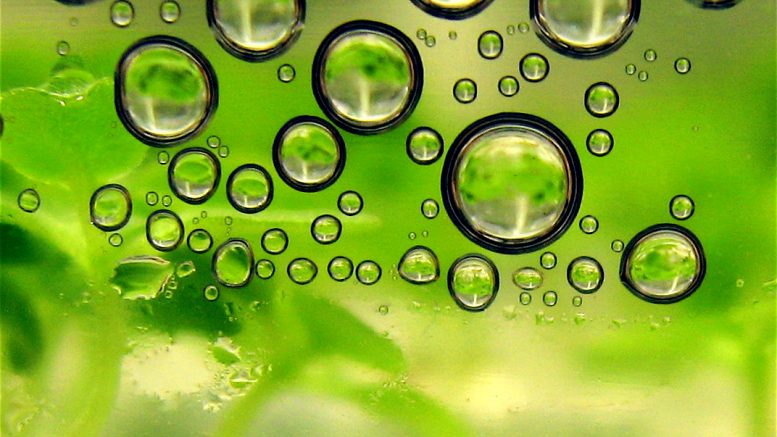By Nick Krewen
Ladies and gentlemen, start your engines: The beans-and-grease movement is stepping on the gas.
In just four years, biodiesel production has grown from 15 million gallons of production in 2002 to 2005 U.S. Department Of Energy estimates of 46 million gallons.
Even if you accept the more rosy 2005 National Biodiesel Board figure of 75 million gallons, the song remains the same: The renewable fuel derived from a glycerin-removing chemical process known as transesterification — try saying that three times quickly — is on a tear.
“Our vision is a one-billion gallon market by 2015,” declares Tom Verry, director of Outreach and Development of the Jefferson City, Mo.-based National Biodiesel Board (NBB), the national trade association that represents the biodiesel industry as the coordinating body for U.S. research and development.
Although biodiesel — an alchemy of either recycled restaurant grease or refined soybean oil or plant oil and alcohol — is running behind corn-based ethanol (3.8 billion gallons in 2005) as an accepted environmentally friendly petroleum substitute, it’s still making admirable headway in the race to resolve — as George W. so succinctly alluded to in a recent State Of The Union address — “our addiction to oil.”
To obtain the degree of biodiesel self-sufficiency that the NBB’s Verry envisions is going to take a combination of consumer confidence and federal incentive.
The endorsements seem to be there, as Verry refers to truck driver testimonials concerning enhanced performance following the implementation of petroleum-mixed biodiesel blends ranging from two percent (B2) and 20 percent (B20) to virgin (B100).
“Operationally, truckers claim their trucks are running smoother and quieter now, because biodiesel is providing their engines with more lubricity than No. 2 diesel,” reports Tom Verry. “It has a high cetane, which is a measure of startability.
“Truckers also says their rigs are pulling better on the hills — we hear that a lot — especially since they run the same routes and hills every week, most of time in the same conditions.”
Verry says that some carriers are even reporting improved mileage with biodiesel fuel, although the NBB isn’t officially sanctioning that position.
“You know that truckers watch their fuel very closely,” Verry adds.
The states of Minnesota and Washington are also doing their part to accelerate acceptance of the alternative fuel industry: Late last year, Minnesota implemented a state requirement that all diesel fuel contain a two percent injection of biodiesel. In January 2006 Washington State followed The Gopher State’s lead through its Energy Security though Renewable Fuels law, mandating a November 1, 2008 deadline for their two percent biodiesel injection requirement.
However, that percentage will increase to five per-cent should enough feedstock crops exist to provide three-percent of in-state biodiesel production.
Some states — particularly California, Kansas, Missouri and Mississippi — are mulling over similar measures while others are already incorporating incentives to sway gas-guzzlers into thinking green.
“In Illinois, if you run a percentage blend of 11 percent biodiesel and 89 percent diesel, there’s no sales tax on your fuel,” says the NBB’s Verry. “So that’s quite an incentive and very competitive with diesel prices in that state.
“Texas has a partial excise tax exemption on biodiesel blends of 20 percent — that’s about a four-cent advantage. In those states it’s moving very well with truckers. In other states, it’s still costing a little more.”
The federal government is offering some enticement of its own with subsidies and tax breaks, paving the way for increased biodiesel production and consumption.
Under the EPAct (Energy Policy Act of 1992), covered fleets can earn one EPAct credit for every 450 gallons of B100 purchased to use in blends 20 percent (i.e. B20) or higher.
Agri-biodiesel manufacturers under 60 million gallons of annual production can also receive a $.10-per-gallon tax credit up to 15 million gallons through December 31, 2008 as part of the American Creation Act of 2004.
“We have a federal incentive across the board that’s really driving the market right now,” admits Verry.
In Tennessee, the federal government is dangling a particularly appetizing retailer carrot: They will kick in up to 80 percent of the cost of a new tanks or other alternative fuel equipment to entrepreneurial service station owners. The state is kicking in its own $60,000 grant in the hopes of funding 15 new pumps in 2006.
And that brings us to one of the obstacles on the road to biodiesel self-sufficiency: accessibility. Although biodiesel service stations and manufacturing plants are springing up almost daily basis, the fuel still isn’t widely available. There are some 1500 distributors, 600 filling stations and 35 biodiesel plants spreading the renewal fuel gospel, with the highest concentration of stations nestled within the central United States, a rivulet of stations on the East and West Coasts and a noticeable dearth of consumer availability in the South and the West.
Some states like Alabama and West Virginia have yet to get with the program.
Cost is another factor: At the moment, biodiesel is approximately nine-cents-per-gallon also more expensive than regular diesel – and that’s even with government subsidies that amount to 20 cents-per-gallon excise tax break for anyone who pumps B20 (20 percent biodiesel and 80 percent diesel).
The NBB’s Tom Verry thinks those hurdles, along with a few others, won’t impede biodiesel’s appeal as the fuel of the future.
“I think it’s only limited by our ability to produce the feedstock,” he states.

